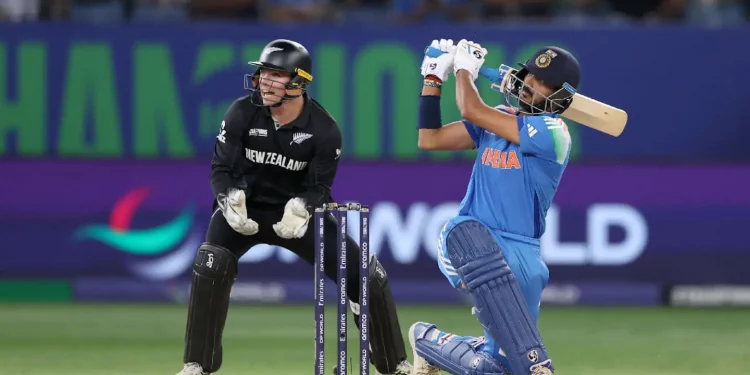A new powerplay regulation for reduced T20Is has been announced by the International Cricket Council (ICC) and will take effect on July 10, 2025. With the new modified regulation, PowerPlay overs are calculated more precisely when the innings is shortened because of inclement weather or other disruptions. Only two fielders are permitted outside the 30-yard circle during the PowerPlay, which is often selected for the first six overs of a 20-over innings. About thirty percent of the innings is made up of this six-over section.
The PowerPlay overs were originally rounded off to the next full over when matches were cut to 8 or 9 overs, which occasionally threw off the game’s equilibrium. Only two overs of PowerPlay, or 25% of the total, were used in a previous 8-over match.
The ICC Men’s Cricket Committee considered the regulation as a result of this discrepancy.
In order to maintain the powerplay duration closer to the optimal 30% of the total overs, the recently implemented algorithm will now compute PowerPlay overs by rounding off to the next ball rather than the nearest over. PowerPlay will now last 2.2 overs in an eight-over innings and 2.4 overs in a nine-over innings under the new regulation.
Updated PowerPlay distributions:
| Match reduced (overs) | Powerplay overs |
|---|---|
| 5 | 1.3 |
| 6 | 1.5 |
| 7 | 2.1 |
| 8 | 2.2 |
| 9 | 2.4 |
| 10 | 3 |
| 11 | 3.2 |
| 12 | 3.4 |
| 13 | 3.5 |
| 14 | 4.1 |
| 15 | 4.3 |
| 16 | 4.5 |
| 17 | 5.1 |
| 18 | 5.2 |
| 19 | 5.4 |
After two balls of the third over in an 8-over innings, the umpire will mark the end of the PowerPlay, allowing three additional fielders to cross the 30-yard circle.
“For many years, this table has been used in the T20 Blast in England, and neither players nor officials have had any issues when a powerplay is ended halfway through an over. The ICC Men’s Cricket Committee has now acknowledged it as the recommended approach going forward. According to Cricbuzz, the ICC informed the members that three more fielders could drop back from inside the circle after the umpire gave the signal in the eight-over example above, which occurred after two balls of the third over.







